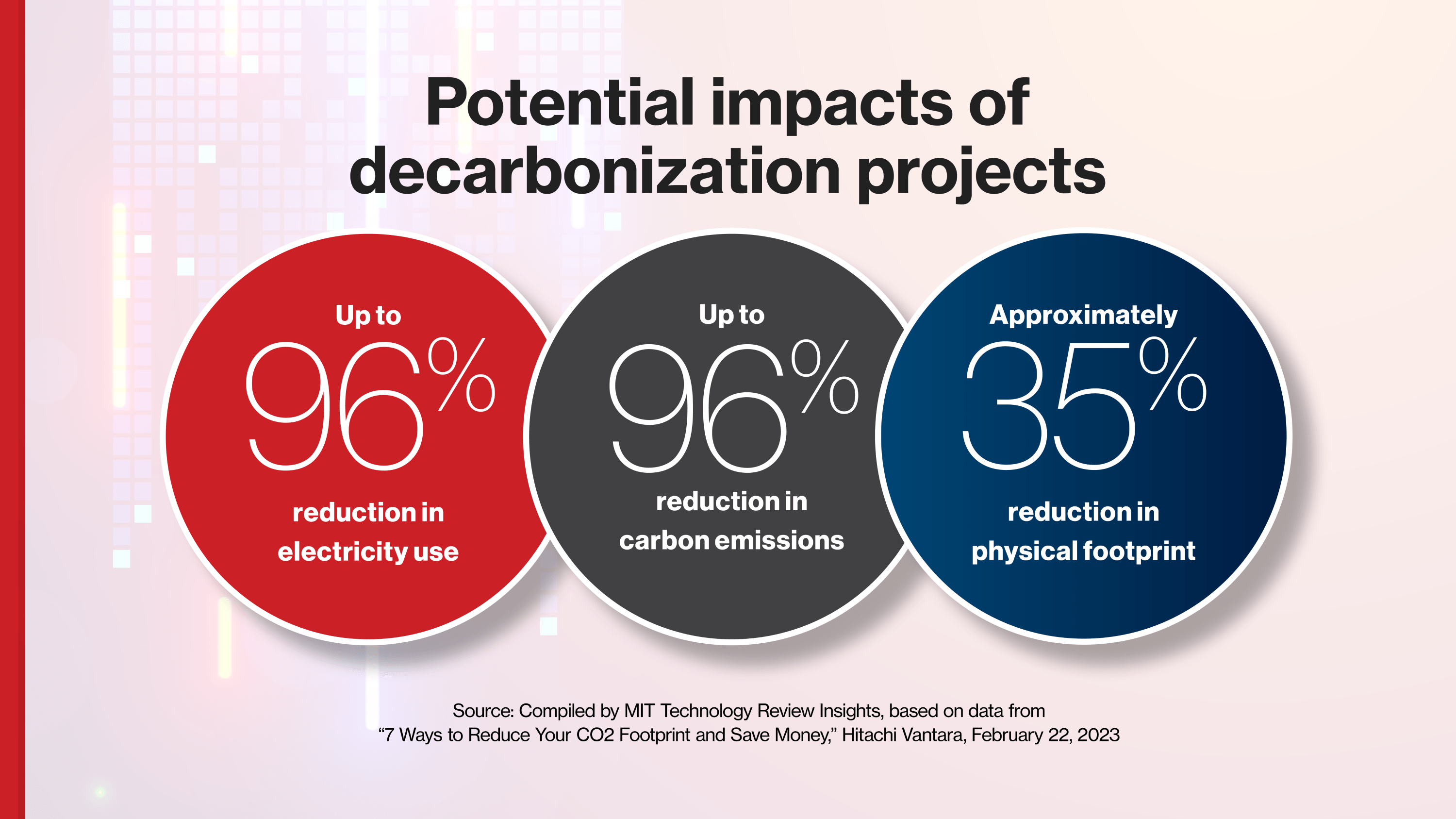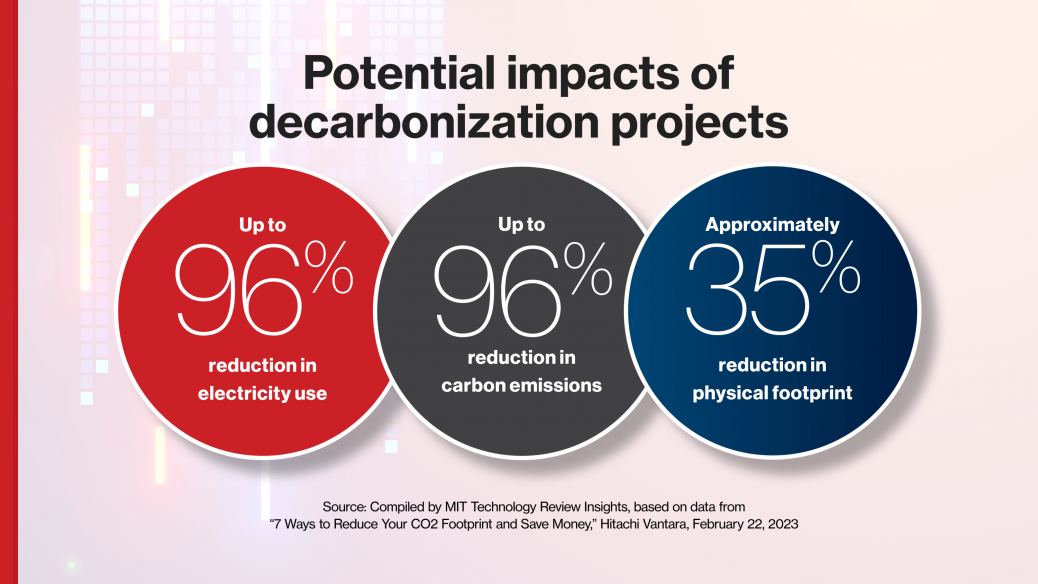For data center operators, options for boosting sustainability include shifting energy sources, upgrading physical infrastructure and hardware, improving and automating workflows, and updating the software that manages data center storage. Hitachi Vantara estimates that emissions attributable to data storage infrastructure can be reduced as much as 96% by using a combination of these approaches.

Critics might counter that, though data center decarbonization is a worthy social goal, it also imposes expenses that a company focused on its bottom line can ill afford. This, however, is a shortsighted view.
Data center decarbonization initiatives can provide an impetus that enables organizations to modernize, optimize, and automate their data centers. This leads directly to improved performance of mission-critical applications, as well as a smaller, denser, more efficient data center footprint—which then creates savings via reduced energy costs. And modern data storage and management solutions, beyond supporting sustainability, also create a unified platform for innovation and new business models through advanced data analytics, machine learning, and AI.
Dave Pearson, research vice president at IDC, says, “Decarbonization and the more efficient energy utilization of the data center are supported by the same technologies that support data center modernization. Modernization has sustainability goals, but obviously it provides all kinds of business benefits, including enabling data analytics and better business processes.”
This content was produced by Insights, the custom content arm of MIT Technology Review. It was not written by MIT Technology Review’s editorial staff.






Recent Comments